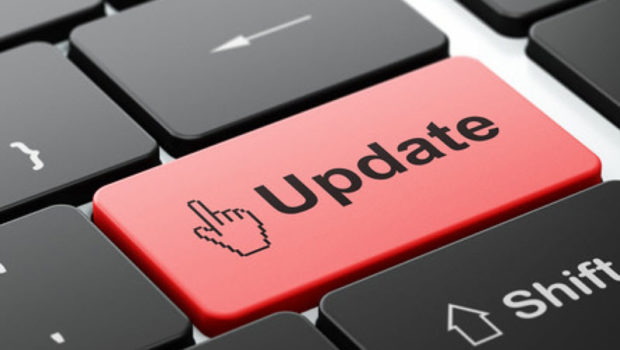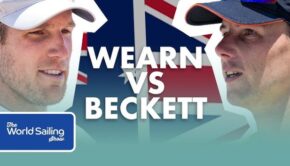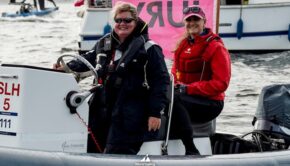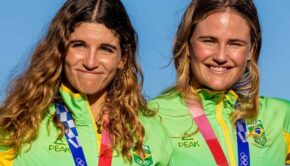World Sailing Presidential Update – April 2017
Published on April 24th, 2017
World Sailing President Kim Andersen shares some of the progress that has been made and what is to come in the future.
Sailing and the Olympics
As you may be aware, this year’s SportAccord (Global Association of International Sports Federations) meeting recently took place in Aarhus, Denmark. World Sailing played a very prominent role, hosting the ASOIF (Associations of Summer Olympic International Federations) dinner.
For me it was particularly special to welcome the Olympic family to my home country and the city of Aarhus, especially as the dinner was hosted at the site of our 2018 World Sailing Championships for all Olympic Classes.
There is no doubt that I have learnt a great deal more about the workings of the Olympic Movement in recent months, the week in Aarhus included. In particular, I have gained further insight into the IOC as an organisation and further supports my view of all the good things the IOC has done, and continues to do for sport and the international federations that it supports.
I now have a better perspective into the need for World Sailing to have a clear plan and roadmap for the future.
As a starting point, we all should have a closer look at the Olympic Agenda 2020, both the background and recommendations, and use them as inspiration for improvement. While sailing is viewed positively within the Olympic movement, this should not deter us from being better – we need to reflect on current facts and ensure that we keep ahead of the curve.
For example, the number of athletes participating in sailing is far above average when compared to other Olympic International Federations and for Tokyo 2020, less than 10 IFs have not proposed major programme changes (sailing included) – while the vast majority have.
While those are some external considerations that reflect our sport, we must also look internally into the activities of our Federation. Areas such as discussions, voting, and submissions, are very rarely recognised and reported upon by the outside world, but results of these discussions such as the proposed showcase events Kite and Offshore sailing are viewed positively by IOC, and we still have to pass the evaluation of events in July before we have the final acceptance of the proposed programme for 2020.
All in all, we must continue to be vigilant and plan ahead in order to ensure that our sport
The Future of Para Sailing
The full integration of Para sailing into World Sailing is now very close to being completed, and I have to say that I have been delighted to see the strong dedication and enthusiasm to Para Sailing around the world.
Of course, we will only be fully satisfied when Para sailing is back in the Paralympic programme. Bearing this in mind, we need to ensure that we continue to find the resources to continue these efforts as the IPC (International Paralympic Committee) will complete their evaluation for the 2024 Paralympic programme in 2018.
The first important step is to increase the numbers of nations participating in competitions around the world, starting with this year’s World Championships in Kiel. Let’s set a new record and show the way for the future!
Furthermore, in the past month, we have had the pleasure to meet IPC President Sir Philip Craven and CEO Xavier Gonzalez. Both meetings were very productive and should serve as great encouragement for the future of Para sailing. At this time, I would like to appeal to all MNA`s to really consider if we can do more to include and develop Para sailing around the world. And, of course, we hope to see you in Kiel!
World Sailing MNA survey
Last month, we conducted a survey that was sent to all World Sailing MNAs (Member National Authorities). I would like to take this opportunity to thank all the MNAs involved as we direct received feedback from close to 90 nations, plus the Council and the Board.
This was the first survey done by World sailing, and putting it together was not the easiest task given that we were starting from scratch. However, with the information attained, this is a positive sign for our organisation going forward, as we now have a base and a format that we can use to further develop our sport.
To give a broader perspective on the process, the input received from each individual MNA was culminated into the respective MNA Groups – and to ensure a strong link between the survey feedback from the MNAs to the MNA groups and Council members – these results were further confirmed by each MNA group via conference call managed by the respective responsible Vice-Presidents and Council Representatives.
During these conference calls, a lot of the additional input and issues were noted that were not necessarily covered by the surveys. Again. I would like to thank you all for the feedback received and we are looking forward sharing the results and views on priorities for World Sailing at the upcoming Mid-Year Meeting.
Improving the quality of broadcasting
World Sailing’s focus on improving the quality of the presentation of our sport has resulted in a tender process, whereby we have invited the leading suppliers to present their ideas and discuss how best to develop the presentation of our sport to our sailors, stakeholders and new, wider audience.
The latest media numbers resulting from the World Cup Series in Miami indicate an encouraging and positive development; development that clearly shows that the use of new media, good tracking systems, live commentary and systemised camera coverage can create a strong interest that can benefit our sport.
The goal for media is to bring the sport to a greater audience and to build the focus and understanding around the athletes – the stars of our sport. Using the data from tracking systems, we can create an understanding of the strengths of our athletes, in varying weather conditions (ex: upwind, downwind, light air, heavy wind, printability, etc) and the performance of each team, as this is how we will build the Heroes of our sport.
In other sports, such as football and golf, we have seen how enhancing people’s knowledge about the strengths and weakness of athletes and teams has been fundamental in attracting new fans. We need to do the same with sailing.
Emerging Nations Program
The Emerging Nations Program continues to progress, with clinics for sailors and coaches in Singapore and South Africa in the last month. Both of these trainings were considered a great success, and we all are convinced about the importance of these programmes for the development of sailing worldwide.
Whilst there is no doubt that funding is needed to accelerate the potential of this Program, we must also address how we plan and execute it. If it could be run even more efficiently, this would help us to ensure that the bulk of the funding received is truly benefitting the most sailors and coaches possible. The next clinic will take place in Vanuatu, Oceania
———————
As always, I am very interested in hearing your views about the direction of sailing in the future, so please feel free to get in contact with me via email, Facebook, or Twitter.











 We’ll keep your information safe.
We’ll keep your information safe.